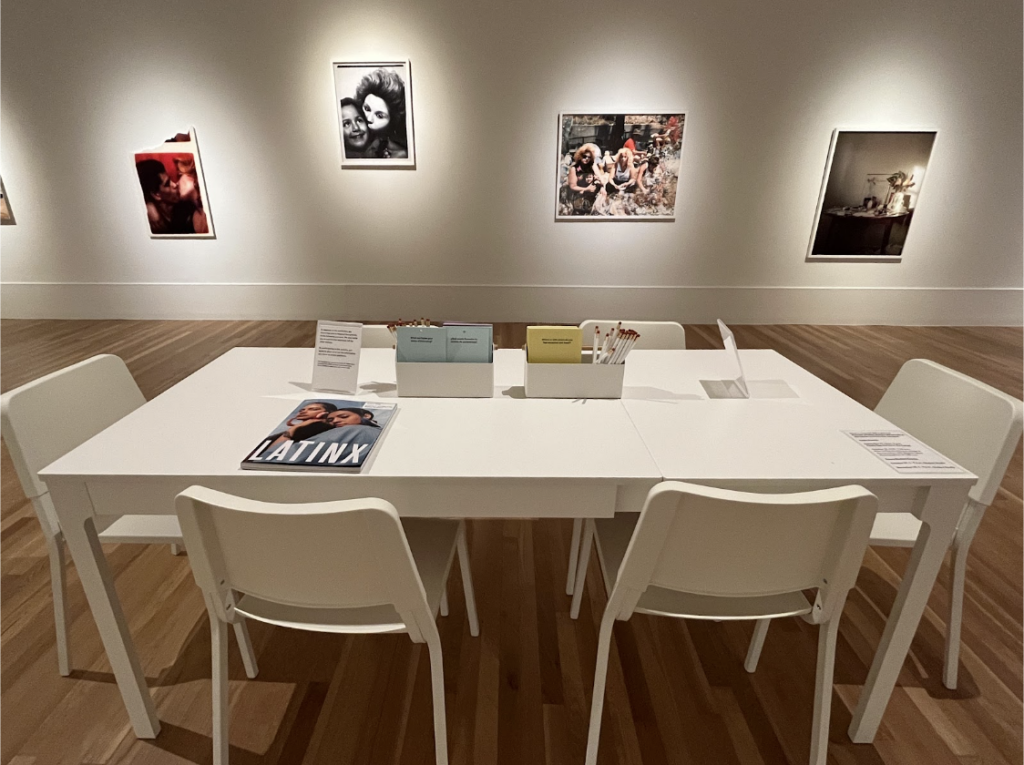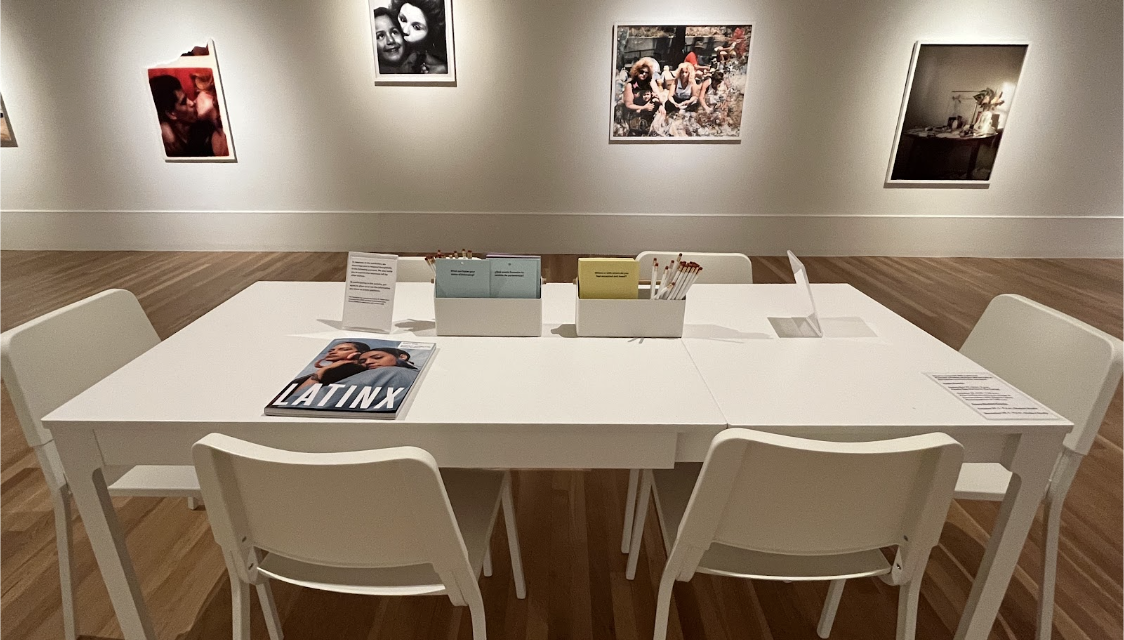
(Eliot Vaughey/Staff Writer)
I had the pleasure of visiting the Michael C. Carlos Museum’s new exhibit, “You Belong Here: Place, People and Purpose in Latinx Photography” on Sept. 9, its opening day. This was a special occasion for me; not only was it my first time seeing contemporary art showcased on the Carlos Museum’s top floor, but also my first time seeing a traveling exhibition on display at the Carlos. Fellow Emory Wheel senior staff writer Zimra Chickering (24C) accompanied me and provided knowledge as a Carlos Museum docent.
Most importantly, “You Belong Here” is the first Carlos Museum exhibit to feature contemporary Latinx artistry, according to Emily Knight, the Carlos’ marketing and communications manager. Over a dozen Latinx photographers and performance artists’ works are present in the collection, which explores complex themes such as community, identity, culture and politics in North American contexts and beyond.
Perhaps it was no coincidence both Chickering and I remarked that the museum was the most crowded either of us had seen for an exhibit’s opening day, or any day in general. Pilar Tompkins Rivas, chief curator and deputy director of curatorial and collections at the Lucas Museum of Narrative Art, curated this exhibition through the internationally-recognized photography magazine, Aperture. “You Belong Here” previously stayed at the Princeton University Art Museum and will remain on the Emory University campus until Dec. 3. Florida International University is the exhibit’s next destination.
Upon navigating the space, I found that the exhibit’s themes flow naturally from one to another. Pieces are arranged in a way that both distinguishes a collection of an artist’s work and complements neighboring art — whether through their geographical relation, subject matter, commentary or color palette. In the first section, a photo of the backdoor to an industrial building stands close to a folio of an individual whose face is covered by telephone pole ads. Not only did this create a harmonious aesthetic, but it also enhanced my emotional response and understanding of the theme for each space.
Unlike most of the Carlos’ exhibits I frequent that are curated primarily around each object’s materiality and provenance, “You Belong Here” tells a clear narrative about Latinx individuals’ navigation through space, community and hardship, down to the visitor’s movement through each section. For a traveling exhibit, it makes clever use of the space provided. Complimentary pieces often flank each side of a section’s main passage. This display format, often featuring a single artist’s work, establishes symmetry; each path starts from similar imagery before branching out into two unique halves of a story.
A novel element I noticed was the exhibit included Spanish translations for each curator’s note and panel of text. Translations are certainly something I have not seen in globally renowned New York City museums like the Museum of Modern Art, Whitney Museum of American Art or Solomon R. Guggenheim Museum. While I myself am not a part of the Latinx community, I imagine those who are can appreciate the accessibility the translations lend to the space.
I also found it notable that the exhibit showcased damaged photography. I have never seen a gallery displaying a piece that is not pristine, and this fact struck me deeply; the types of damage to the photo, be it fire or water, and the stories that each photo carries speak to the materiality and history within the piece of film itself.
The first room of the exhibit mostly navigates Latinx identity in conversation with urban space and gentrification. Clusters of photography jump around the U.S. map, taking viewers from New York City to Chicago and Anaheim, Calif. Human subjects flicker in and out, first in their day-to-day life before gradually becoming disembodied as the space transitions to an industrial setting. I noticed the exhibit made use of an adjacent room that was not open in the previous exhibition, housing an immersive screening of performance art by Sofía Córdova. The space’s transformation enhanced the exhibit’s interactiveness, with the walls painted and props positioned to mirror the film’s set. Distinct in Córdova’s performance art is its portrayal of revolution — be it in the face of inequality or an autocratic regime — and its unsung constituents.
From the second section onward, the pieces began to feel far more intimate — self-construction of identity and expression manifested in portraiture. I particularly enjoyed the second section’s concentration on queerness; never have I possessed the opportunity to pore over Mexican drag, lesbian and queer club scenes until then, reveling in their vibrancy.
Perhaps the most intimate part of the exhibition awaited me in the last section. Only two artists’ photography occupies the spread of white walls: Star Montana and Genesis Báez, each providing a different perspective on family stretched along the path of immigration. Family portraits, enlarged photo booth reels, dignified matriarchs, tender love — slivers of lives unknown to me yet familiar in their moments of joy and separation. Montana clung to that warmth, while Báez showed something poignant and fleeting. I imagine that this section in particular evokes a wide variety of emotions for all kinds of visitors, mine only making a drop in the ocean.
Some of these emotions are available to both see and express with a unique interactive installation. A table with chairs sits in the center of the room with paper slips on which visitors can respond to various prompts surrounding love, identity and community. The completed slips are displayed on a wall near the far end of the room — some with polaroids of people’s loved ones attached. I flipped through many of the responses, some in English and others in Spanish. I translated the following slip from Spanish:
“What forms your identity?”
“Identity is not just skin,” the slip reads. “Identity lives, feels. Identity is born and forms itself. For me, it is my culture. My ancestors. My family. To be Mexican is a pride. Never make yourself less for others.”
¿Qué forma tu identidad?
“La identidad no es solo piel.
La identidad se vive, se siente.
La identidad nace y se construye.
Para mí, es mi cultura.
Mis antepasados
Mi familia.
Ser Mexicana es un orgullo.
Nunca te hagas menos por los demás.”





